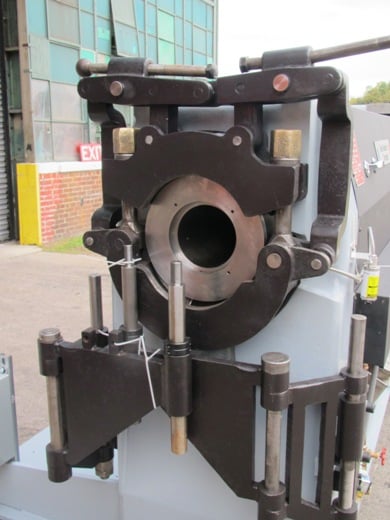Screw Head Slotting Machine
Good for use outdoors and in washdown environments, these metric 18-8 stainless steel screws are more corrosion resistant than steel and nearly as strong. Their pan-shaped head sits nearly flat on the fastened surface, so there’s no need to countersink a hole. SCREW HEAD SLOTTING MACHINE (Automatic, High Speed) FEATURES: ABM Tools Automatic Screw Head Slotting Machines have been developed for fast & economic slotting of big quantities of screws in current dimensions. Advantages for the industry. Automatic sequence of operation. Minimum set-up time.
Cnc Slotting Machine

Screw Head Slotting Machine

Slotting Machine Tools
right are all equipped with Robotbar automatic stock-loading units
Screw Head Slotting Machine For Sale
Continued:
Drive System
Older type of Swiss-Auto from all makers were driven by flat belts from overhead line shafting but, by the end of the 1920s, most makers of professional machine tools, including Petermann, were fitting self-contained drives with built-in motors and countershafts or speed-change gearboxes. However, even when provided with an integral drive unit, the complexity of the Swiss-Auto (especially in the confined area of the headstock) somewhat restrained the designers of the smaller models in their ambitions to provide a decent range of spindle speeds. In Petermann's case the problem was solved on the No. 0 by passing the drive through a simple gearbox fitted with 'pick-off' wheels that the operator could change himself. Although the speed range was limited, because all work was small - and automatically completed - only a narrow range of higher revolutions was required (a maximum of 12,000 r.p.m was needed on some models with a range from 3000 to 8000 being common) and the system worked commendable well and with great reliability.
Working
Fitted with an automatic bar feed - Petermann's term for this was the Robotbar - it was usual to run these lathes unattended for very long periods, the only requirement being to keep the bar-stock hopper topped up (as in the picture above).
Shown below is a now rare No. 0 set up for screwcutting and with a screw-head slotting attachment mounted (the slide-like assembly rising from in front of the headstock spindle). When turning steel on these lathes it was especially important that a continual flow of coolant (provided by a geared-driven pump) flooded over the tools: this cooled them (so limiting expansion and consequent changes in the turned dimensions), washed away swarf and extending tool life. Although not as essential when turning brass, it was common to keep the flow running to give the additional benefit of an improved surface finish..
Accessories and Attachments
One important advantage of the Swiss Auto was the ease with the machine could be adapted to mount ancillary equipment - typical and popular examples being single, double and triple-drilling units, thread-cutting attachment, drilling and thread-tapping accessories and a device to slot the heads of tiny screws. All these units were provided with a separate and comprehensive, well-illustrated instruction manual of the highest quality. As an example of what could be accomplished on the 5-tool model P-7, it was possible to manufacture a complex regulator key of out of bar stock by fitting four turning tools, one parting-off tool, a vertical milling spindle in tool position 4, a stopping device on the headstock spindle to keep it stationary while milling, a wire camping device for holding the material during the return movement of the spindle with the collet opened--and a chip separating device. Thus, set and fed with bar stock, the machine would turn out thousands of components without any intervention save to change tooling as it wore. The screw-head slotting device was similarly interesting and its method of operation typical of the complex manipulations necessary to accomplish this sort of work. After parting off, the partially-finished screw was supported in a tiny tube on the end of a swivelling arm; the arm brought the screw in front of a circular saw (driven from a belt at the rear of the machine) but with a little spring-loaded brass pressure sheet with a slot in its front (just wide enough to allow the saw blade through) imposed between saw and screw. The effect was to push the screw firmly onto its seat and allow the slot to be made. After this action, the arm moved backwards, a rod pushed the screw out of its holding tube and the finished part tumbled down a brass slide into a hopper. Two cams were used, one to move the arm forwards and backwards and the other (a face cam) to give a swivelling action - the end position of which was adjustable using stop-screws. As the operation was always identical, the cams were made as one unit and, being highly stressed and prone to wear by an especially long (swivelling) arm, the tappets (followers) were fitted with rollers..